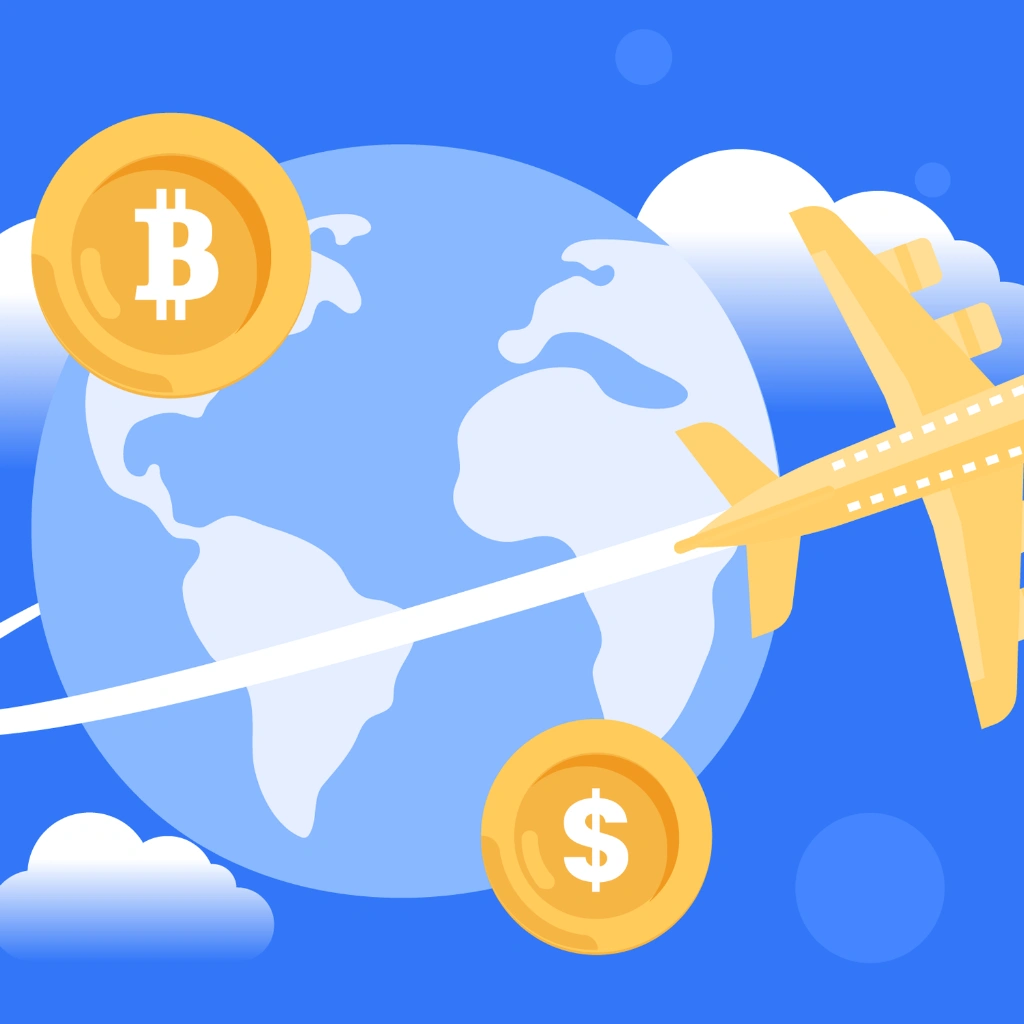Crypto travel savings – Picture this: you’re planning a trip—flights, hotels, and, of course, Googling “best gelato in Rome.” Then you stumble across a Reddit thread swearing that crypto is the ultimate travel hack. No foreign transaction fees. No terrible exchange rates. No banks in your business. Just load up some Bitcoin or USDT and waltz through Europe like a tech-savvy Marco Polo.
Sounds awesome. Too awesome, actually.
So, what’s the real deal?
Foreign Transaction Fees: The Enemy We Know


Let’s not pretend banks are saints. Use your debit or credit card abroad, and you’re often slapped with a 1–3% foreign transaction fee—for doing literally nothing extra. Withdraw cash from an ATM? Flat fee plus a garbage exchange rate. That’s where the crypto crowd comes in chanting, “Ditch the system! Just use crypto!”
Nice in theory. But the real world isn’t that clean-cut.
Where Crypto Actually Saves You Money


I’ll give credit where it’s due—crypto can save you money if you play your cards (and coins) right:
- Crypto cards from platforms like Crypto.com or Binance often let you spend in local currency without foreign transaction fees. That’s a win.
- Peer-to-peer payments—paying your Airbnb host in ETH or tipping a tour guide with USDC—cuts out middlemen entirely.
- In places like El Salvador or Thailand, you might stumble upon a café that proudly flashes a Bitcoin logo on its window.
In those moments? Crypto feels like magic.
Crypto travel savings: But Don’t Get Too Comfortable…


Just when you think you’ve outsmarted the banks, reality taps you on the shoulder:
1. Conversion Fees
Most platforms still charge 0.5%–2% when converting crypto to local currency. Sure, it’s not highway robbery, but don’t kid yourself—it’s a fee.
2. Volatility Will Ruin Your Day
Let’s say you bought dinner in Bangkok with BTC. Cool. Now imagine BTC drops 10% overnight. Suddenly, that pad thai cost more than your plane ticket.
3. Network Fees Are a Joke
Try sending ETH during peak hours and watch your $20 transfer rack up $30 in gas fees. Congrats, you just paid more in fees than your meal.
4. Crypto Still Isn’t Everywhere
Crypto advocates act like we’re living in Blade Runner. Reality? Most taxis, food stalls, and emergency services still want cold, hard fiat. Try explaining a QR wallet address to a street vendor. I dare you.
Crypto travel savings: When It Does Make Sense
Now, I’m not here to bash it entirely. There are sweet spots where crypto really flexes:
- Digital nomads getting paid in crypto? It’s easier to spend it directly than convert it to fiat and deal with banks.
- Staying a long time in crypto-friendly countries? You’ll probably find enough merchants to make it work.
- Traveling to places with unstable currencies? Yeah, I get preferring USDT over Monopoly-money inflation.
But if you’re going on a short vacation or just want a stress-free holiday? Crypto probably isn’t your ride-or-die.
Crypto travel savings: It’s Not the Future—Yet
Crypto travel savings? It’s not a scam, but it’s not a silver bullet either. It takes planning, know-how, and a high tolerance for volatility. And most travelers? They just want to book a flight, enjoy a beach, and not deal with KYC delays or watching ETH gas fees spike like a meme stock.
Final Thought: Worth It?
If you’re crypto-native, already living and breathing blockchain, sure—go ahead. You’ll probably navigate the system better than most.
But for the average traveler? Crypto is a cool experiment—not a full-blown replacement for a Visa card. Try it out. But don’t burn your bridges with the banking world just yet. And please—for the love of tapas and late-night gelato—bring a backup card.
Because even in 2025, cash is still king in a lot of places.
Relevant news: HERE



